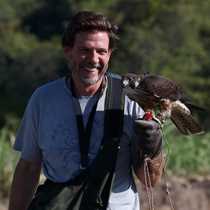This morning we woke up after a full night of navigating, leaving the Antarctic Peninsula behind. We woke up not too far away from the South Shetland Islands as we made our way towards Ushuaia.
The Drake Passage is famous for being one of the roughest waters to navigate in the world. Fortunately, this time we were not treated badly at all. Gentle rocking was felt throughout the journey. Although we still have one more day of sailing till we reach the coasts of Tierra del Fuego, we can consider this to be quite a pleasant ride.
The Southern Sea is also famous for its seabirds. How marvelous it is to be able to go on the back deck and observe the different tube-nosed birds following the ship! Black-browed and wandering albatrosses, giant and pintado petrels, and a couple others were often seeing during our crossing. This was also a good opportunity to photograph or simply observe these magnificent birds, which are so perfectly adapted to living on the wind. They smell the air through vast oceanic areas in search for food. Tubenoses are some of the few birds that have a well-developed sense of smell, and they can detect plankton blooms, presumably hundreds of kilometers away. Although they do not feed on plankton, the presence of plankton also tends to indicate the presence of fish or squid, which are the source of food for these birds.
We had a series of presentations in the lounge, and learned some more interesting facts about ice. We learned as well about the native people from Tierra del Fuego, and listened to interesting stories of a photographic expedition with a National Geographic photographer.
For many of us, visiting Antarctica has been a life-changing experience. Very few have seen with their own eyes, places of the world that exist in such remoteness. We had the virtue of admiring the fact that life has found its way over and under the freezing cold ocean—not only has life found its way, but it has done with such elegance and grace!







